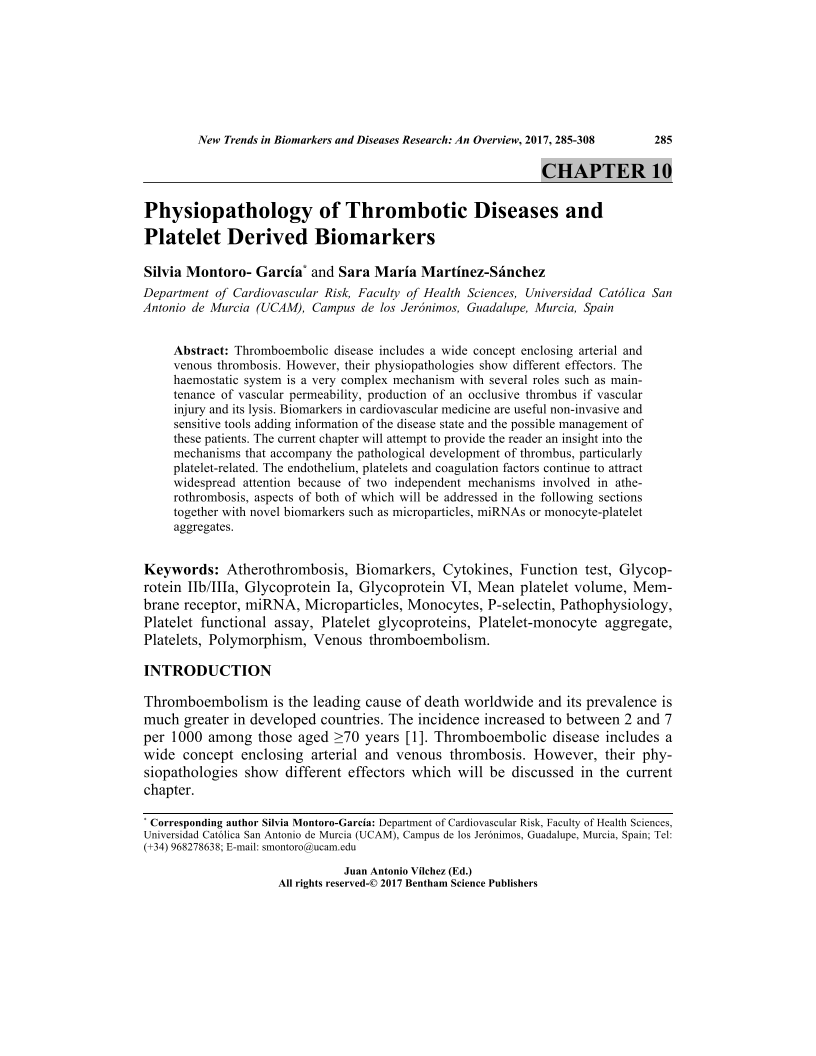Physiopathology of Thrombotic Diseases and Platelet Derived Biomarkers

- Authors: Silvia Montoro García1, Sara María Martínez-Sánchez2
-
View Affiliations Hide Affiliations1 Department of Cardiovascular Risk, Faculty of Health Sciences, Universidad Catlica San Antonio de Murcia (UCAM), Campus de los Jernimos, Guadalupe, Murcia, Spain 2 Department of Cardiovascular Risk, Faculty of Health Sciences, Universidad Catlica San Antonio de Murcia (UCAM), Campus de los Jernimos, Guadalupe, Murcia, Spain
- Source: New Trends In Biomarkers and Diseases Research: An Overview , pp 285-308
- Publication Date: September 2017
- Language: English
Physiopathology of Thrombotic Diseases and Platelet Derived Biomarkers, Page 1 of 1
< Previous page | Next page > /docserver/preview/fulltext/9781681084954/chapter-10-1.gif
Thromboembolic disease includes a wide concept enclosing arterial and venous thrombosis. However, their physiopathologies show different effectors. The haemostatic system is a very complex mechanism with several roles such as maintenance of vascular permeability, production of an occlusive thrombus if vascular injury and its lysis. Biomarkers in cardiovascular medicine are useful non-invasive and sensitive tools adding information of the disease state and the possible management of these patients. The current chapter will attempt to provide the reader an insight into the mechanisms that accompany the pathological development of thrombus, particularly platelet-related. The endothelium, platelets and coagulation factors continue to attract widespread attention because of two independent mechanisms involved in atherothrombosis, aspects of both of which will be addressed in the following sections together with novel biomarkers such as microparticles, miRNAs or monocyte-platelet aggregates.
-
From This Site
/content/books/9781681084954.chapter-10dcterms_subject,pub_keyword-contentType:Journal -contentType:Figure -contentType:Table -contentType:SupplementaryData105

